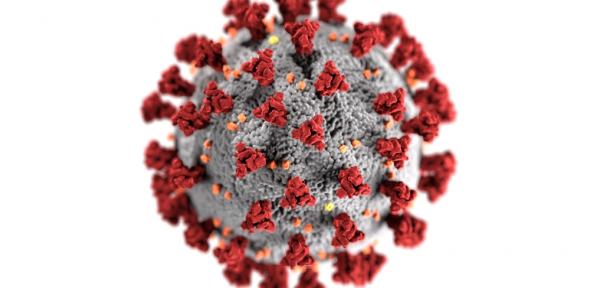
Image: CDC on Unsplash
Researchers here who normally design antibodies for use against Alzheimer’s disease are now redirecting the same approach to develop antibodies against the coronavirus.
Scientists in the Vendruscolo research group usually work on the rational design of antibodies that have applications in Alzheimer’s disease. (One of their most recent papers is on Rational Design of Conformation-Specific Antibodies for Amyloid Beta Oligomers.) But given the current COVID-19 outbreak, they are looking at ways to address that instead. And they are targeting one particular part of the virus: the spike.
As shown in the illustration above (which was created at the US Centers for Disease Control and Prevention), the outer surface of the COVID-19 virus is adorned by an array, or corona, of spikes.
These attach the virion – the virus particle – to the membrane of human cells by interacting with a host receptor, human ACE2, which is expressed on certain cells. This initiates the infection. These cells are mainly found in the lungs, which is why infected patients develop pneumonia-like symptoms
 The spike is a protein (called spike glycoprotein) and is "quite a complex structure," says Professor Michele Vendruscolo. "Our epitope - that is, the region that we are targeting - is very specific: the tip. That is the binding pocket of the receptor-binding domain, the part of the spike that recognises the host cell and binds to it."
The spike is a protein (called spike glycoprotein) and is "quite a complex structure," says Professor Michele Vendruscolo. "Our epitope - that is, the region that we are targeting - is very specific: the tip. That is the binding pocket of the receptor-binding domain, the part of the spike that recognises the host cell and binds to it."
This region may be the Achilles' heel of the virus. While the rest of the virus will naturally evolve to try and escape the defences of the host organism (including those that are put in place through vaccination), the one part of the virus that is less likely to evolve is this binding pocket.
"It cannot change easily, because the cell receptor that it is targeting does not change," says Michele. "So in order to be recognised by the human cell receptor, this particular spot on the virus spike has to stay the same."
Mauricio Aguilar Rangel and Pietro Sormanni in the Vendruscolo group may have come up with an approach to succeed in targeting this specific epitope.
"With the method of antibody discovery that we have developed over the past five years – which is based not on immunisation or related in vitro approaches, but on a computational screening procedure – we can target exactly that elusive epitope," Michele explains. "So we have now computationally designed antibody sequences meant to bind this target."
The next step is to produce these antibodies in the lab and run experiments to find out whether they actually bind to their target in real-life conditions, in the same way that they do in a computer.
Down the road, these antibodies could then be developed either as an immunotherapy for patients, or as diagnostic tools.
"These are very early steps, but I would really like to see these antibodies produced and then made available to the community to explore the opportunities that they offer," Michele says.
